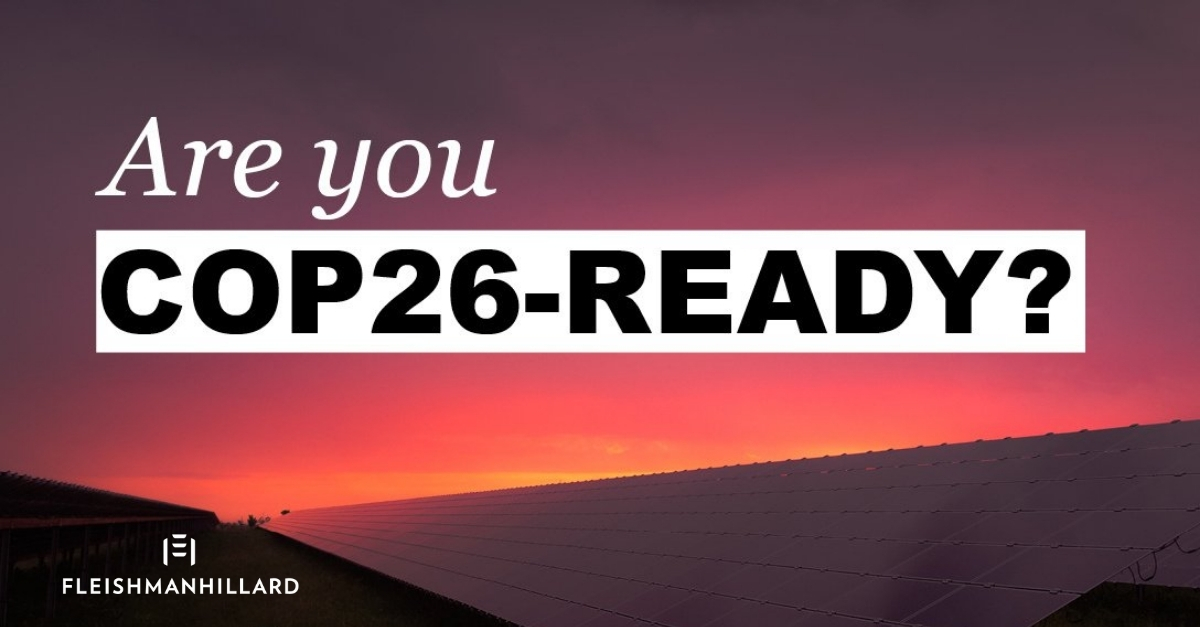Connecting to COP26 – View from Latin America

COP26 – The view from Latin America from Jorge Diaz de Villegas, Senior Partner, and Denise Rockenbach, Senior Vice President, FleishmanHillard Latin America.
WHILE THE REST OF LATIN AMERICA HOPES FOR RELIEF TO FINANCE CLIMATE INITIATIVES, ALL EYES ARE ON BRAZIL AND MEXICO | COP26 – The view from Latin America
When representatives of Latin American countries, the United States and the UK gathered for a regional summit in the leadup to COP26, Brazil and Mexico, the region’s two main carbon emitters, chose not to participate. Those attending echoed a common concern about the need for increased funding from wealthier countries to help them reduce emissions and adapt to climate change.
In a region where many countries carry large amounts of sovereign debt, there were calls for debt relief in exchange for commitments to meeting climate goals. And while the region is estimated to account for only about 5% of global emissions, a UN report singles out Latin America as one of the regions that could be most adversely affected by climate change.
In that context, many believe that the burden for investment in climate change mitigation in the region should be carried by countries that contribute more to global emissions.
The absence of Brazil and Mexico from the regional summit, combined with their failure ahead of COP26 to increase their mitigation commitments above the levels established in 2015, did not bode well for their participation in COP26.
To the surprise of many observers, Brazil adopted a more conciliatory tone at the summit, although skeptics might argue that it is just an effort to rehabilitate its image on the world’s environmental stage, which has suffered during the presidency of Jair Bolsonaro.
The government announced a more ambitious climate target, going from a reduction of 43% to 50% by 2030, and carbon neutrality by 2050. Brazil will also support the objective of limiting global warming to 1.5 degrees Celsius. The country also joined the pledge to reduce methane emissions and to halt deforestation by 2030.
For its part, Mexico – Latin America’s second-largest economy – has opted for a more confrontational approach.
President Andrés Manuel López Obrador stood firm in his demand that the top 10 emitting countries do more to reduce emissions before requiring that other countries do the same. He went as far as criticizing summit participants for their hypocrisy, accusing them of increasing their fuel production, at the same time that they hold summits for the protection of the environment.
And while Mexico ended up signing the agreement to reverse deforestation, the country was not listed as a signatory when it was first announced last week – and Lopez Obrador later took credit for inspiring it with Mexico’s homegrown reforestation plan.
This ‘Connecting to COP26’ series is brought to you by the FleishmanHillard Cop26 Unit as part of the COP26 Daily Digest. For more information, please contact the FleishmanHillard COP26 team.
Find Out More
-
Platinum CMS Award
March 13, 2024
-
Changing Communications Tack at Mobile World Congress
February 21, 2024


